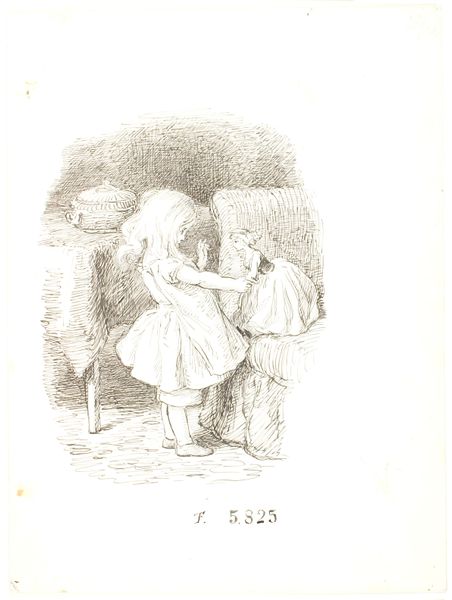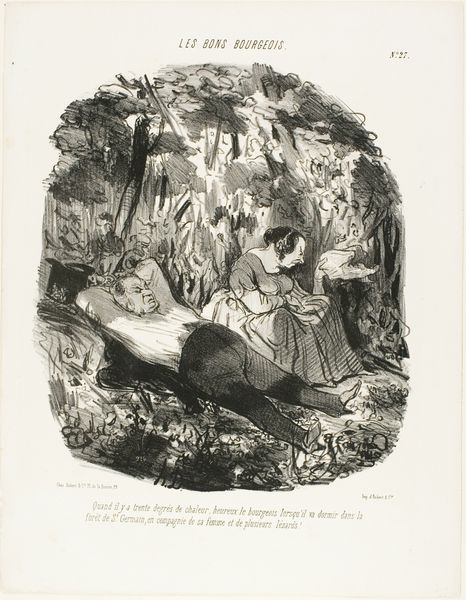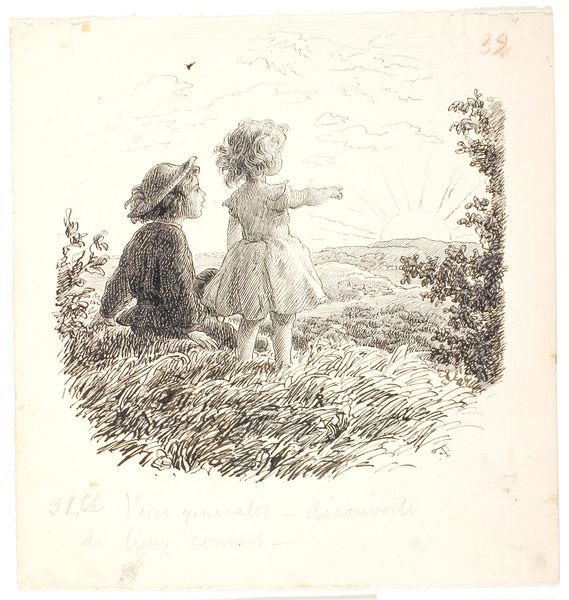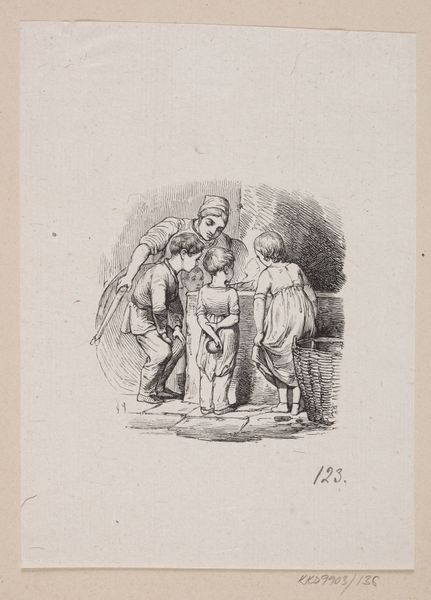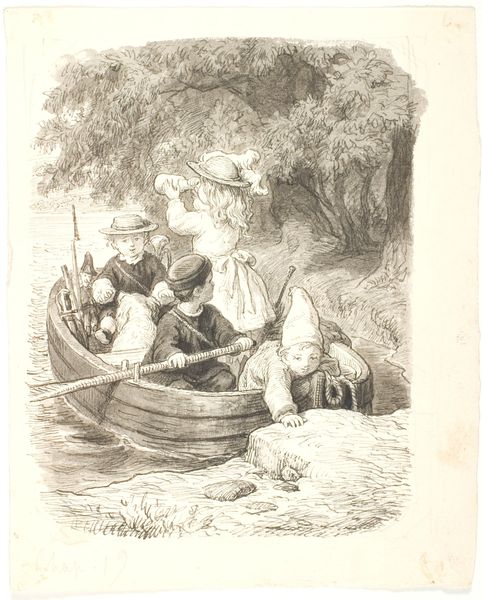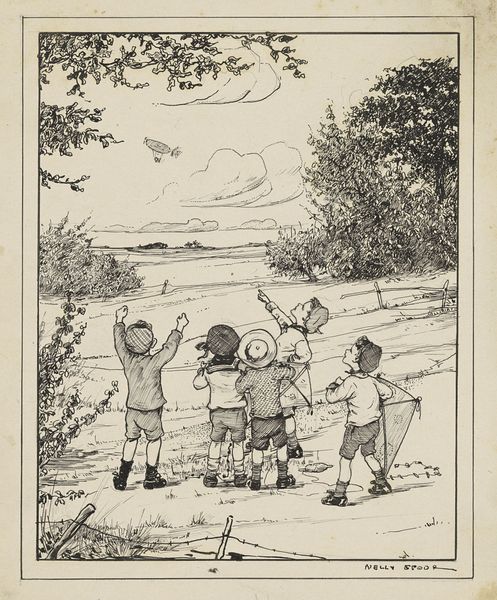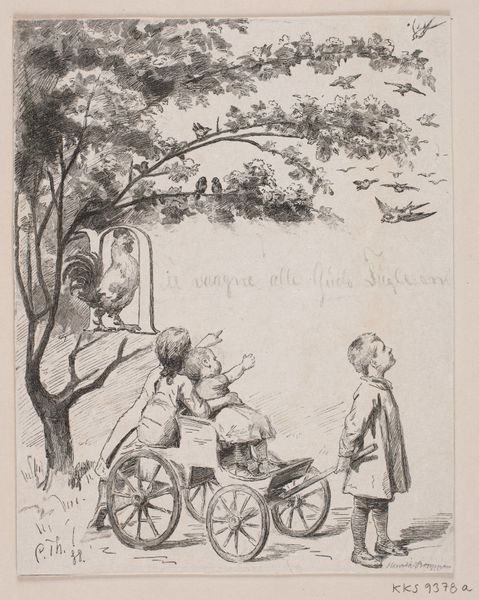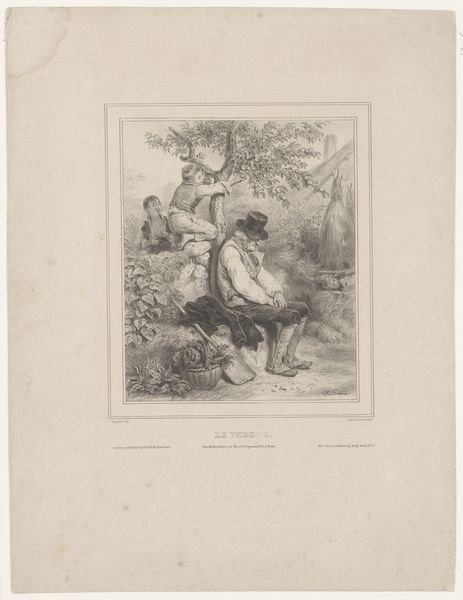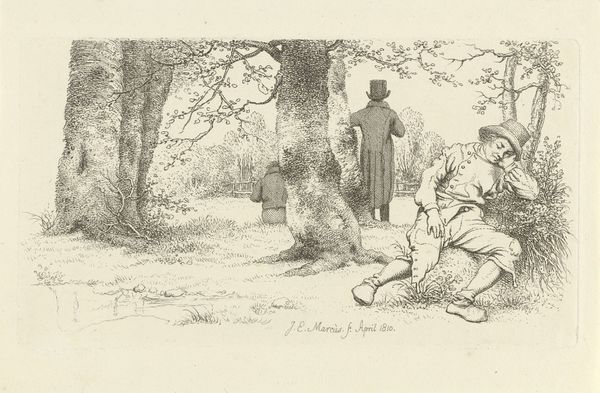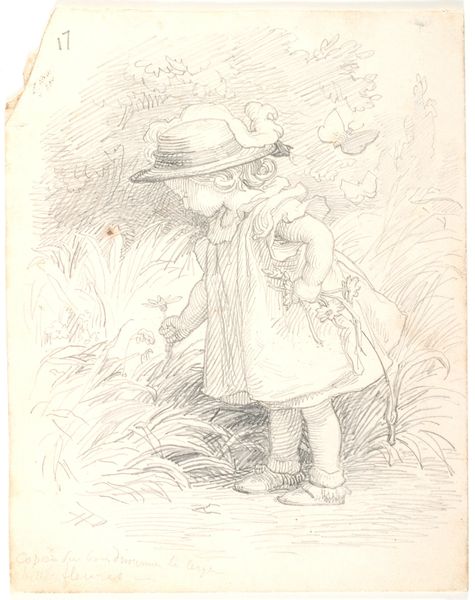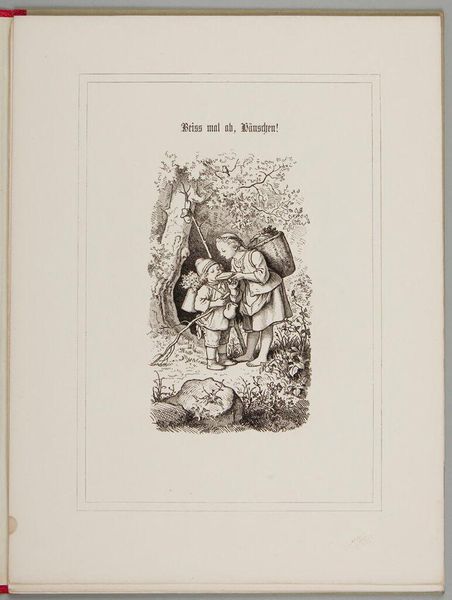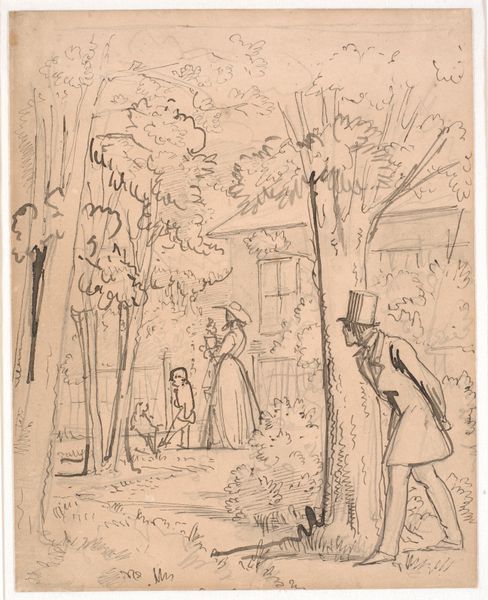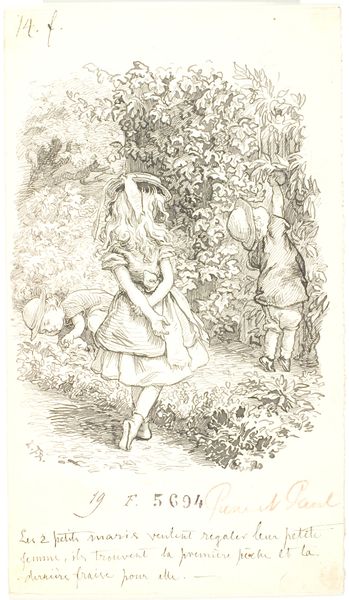
Dimensions: 215 mm (height) x 160 mm (width) (bladmaal)
Editor: So, this is "The Four Children in a Forest," a drawing made with pencil and ink by Lorenz Frølich in 1866. It's quite a delicate piece, very detailed. What strikes me is how contained the composition feels, almost like a little world captured within these lines. What do you see in it? Curator: The organization of forms and values establishes several points of tension. Note how the composition uses the silhouette of the overhanging tree to almost cradle the figures, yet simultaneously presses down upon them. Further, examine how Frølich masterfully deploys line weight. Notice the finely rendered details, especially the contrast between the delicate hatching of the background figures versus the darker, more defined lines describing the children. How does that manipulation of line affect your perception? Editor: It creates depth, certainly, and focuses my attention on the children in the foreground. But what's the effect of using detailed vs. indistinct lines, beyond creating depth? Curator: Semiotically, it privileges the children as active participants within the narrative, almost performers. In contrast, the sketchier, softer rendering of figures at the rear might act as setting, or scenery, thus positioning the viewer closer to the children. The composition suggests a theatrical arrangement. Don't you think? Editor: I can see that. The figures in the back are so vague and light. You’re right, like a backdrop. Curator: Precisely! Editor: It's interesting to see how analyzing the composition and technique reveals layers of meaning within a seemingly simple scene. Thank you for elucidating its unique qualities. Curator: The devil, as they say, is in the details; form always has function. A pleasure to consider the composition of this work.
Comments
No comments
Be the first to comment and join the conversation on the ultimate creative platform.
